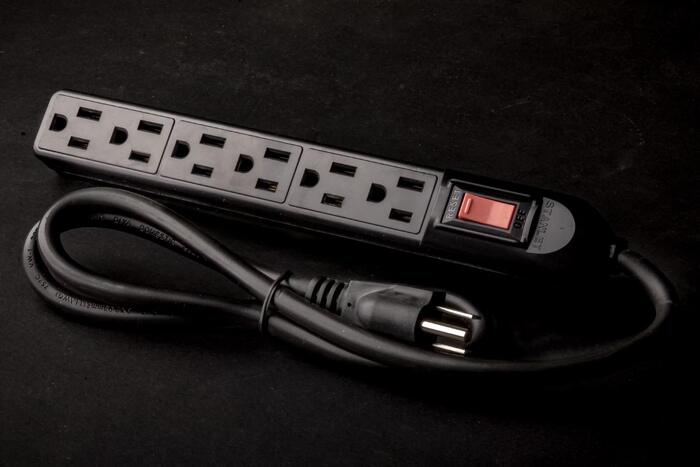With the arrival of the festive season, the markets are filled with various colorful lighting arrangements. However, many people struggle to find a safe, reliable and appropriate extension cord to power these arrangements.
Today, we are going to solve this issue by providing you with six essential tips to consider when choosing an extension cord.
1. Power Capacity
The first step when inquiring about an extension cord is to check its power rating. Different extension cords have different power ratings that indicate the maximum power output they can handle. For instance, a 20 amp power strip can handle electrical output of up to 2500 watts and is perfect for common home appliances.
Suitable energy rating is paramount for safety because different equipment has variable electrical loads.
While light-duty extension cords with low power ratings, such as 15 amps are suitable for chargers and TVs, some high-voltage appliances like refrigerators produce more heat and require higher output.
Hence, they are supposed to be utilized with a powerful, high-capacity extension cord.
2. Be Conscious of the Cord
Several things determine the right choice of your extension cord and one among them is the wires.
Wires are the major components of an extension cord and therefore extreme care must be exercised during the selection of the wire braided in it.
Finally, take into account the length and size (gauge) of the wire because this factor is crucial to consider since the length and thickness impact the electricity that passes through the cord.
A thicker wire has a smaller wire diameter, this combined with a longer length cord, results in voltage drops, causing less current flow.
3. Wire Protection
An extension cord is wrapped with sheathing to protect and increase the shelf life of the wires. This sheathing is made up of different materials depending on its usage. Generally, extension cords made for indoor use have a sturdy and rigid plastic sheathing.
Meanwhile, for outdoor usage, these cords are wrapped with braided rubber sheathing. Besides being more robust and flexible, these cords are also waterproof to avoid any electrical damage.
4. Integrated Insulation
While all wires are similar in nature and are made of either copper or aluminum, their insulation may vary from each other. Insulation is a non-conductive polymer that avoids wires and cables from contacting each other, prevents electrical leakage and is crucial for the safety of the circuit.
Insulation wires are made up of different materials that include PVC, polyethylene, polyurethane nylon and rubber.
- Polyvinyl Chloride or PVC is highly regarded for its flame and moisture resistance and can handle temperatures between –55oC and 105o It is also non-toxic, odorless and abrasion resistant.
- Polyethylene is a rigid, abrasion resistant dense polymer mainly used for low capacitance cables and has a temperature threshold between –65oC and 80o
- Polyurethane is a sturdy and flexible polymer that is water and abrasion resistant and has a high temperature range between –62oC and 93o
- Nylon is preferred for insulation due to its high flexibility, abrasion and chemical resistance.
- Rubber is used in various forms of insulation due to its low-temperature, water and abrasion resistance and excellent electrical properties.
Be cautious of the polymers used in the wires of the extension cord and then select the one that suits your requirements.
5. Plugs
An extension cord relies on its robust plug to supply suitable electrical current. These plugs differ depending on their usage and design. The plugs usually have two flat prongs, but some high-capacity cords utilize three semi-round prongs for the ground wire.
Two prong plugs are connected in polarized wire and are safe to use with polarized receptacles. While some non-polarized two prong plugs are available in some places, they can only work with non-polarized receptacles but do not work with polarized receptacles.
These plugs also differ in sheathing, extension cords made for outdoor use have rubber sheathing to protect against water damage. In contrast, indoor cords do not come with additional plug sheathing.
Some plugs nowadays also include a fuse to prevent power surges and an indication light to indicate a live receptacle.
6. Requirements
As mentioned, extension cords are available in different sizes and configurations. So, it is best to thoroughly assess your requirements before making a decision.
Also, research and opt for the best option that does not exceed your budget. There are a lot of budget-friendly brands available on the market that guarantee an efficient and safe extension cord.
Conclusion
A handy extension cord is only reliable as its build material. Therefore, it is crucial to have a complete understanding of the anatomy of an extension cord. Additionally, you should always buy from a trusted and reputable source and check for any damage or discrepancy that may cost you later.
Keep these points in mind, assess your requirements to make an informed decision, and buy a suitable extension cord for your needs.


